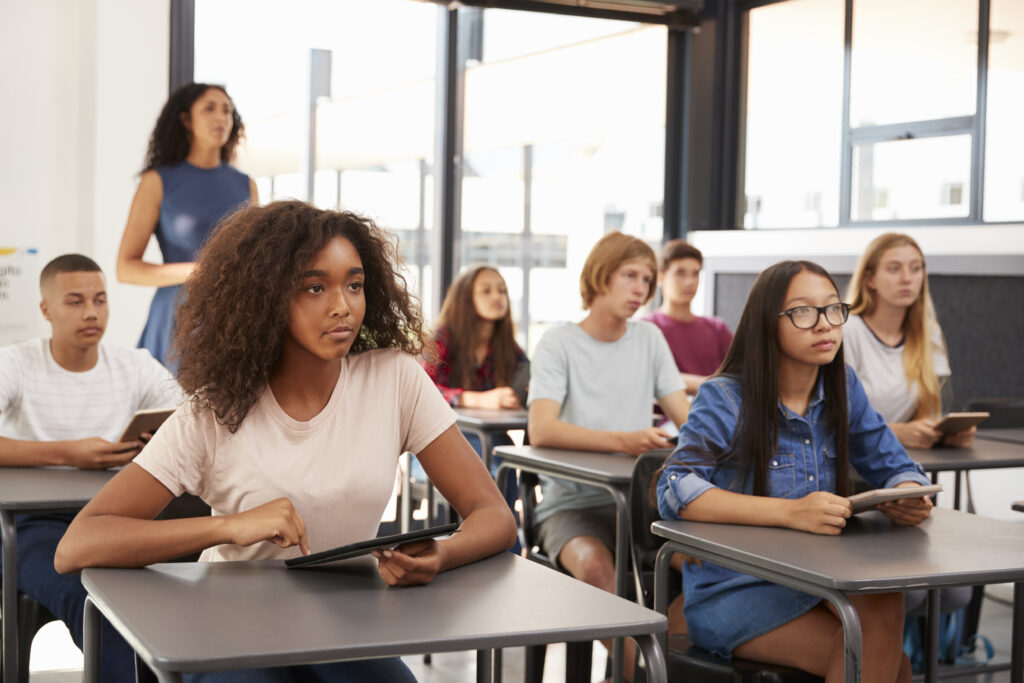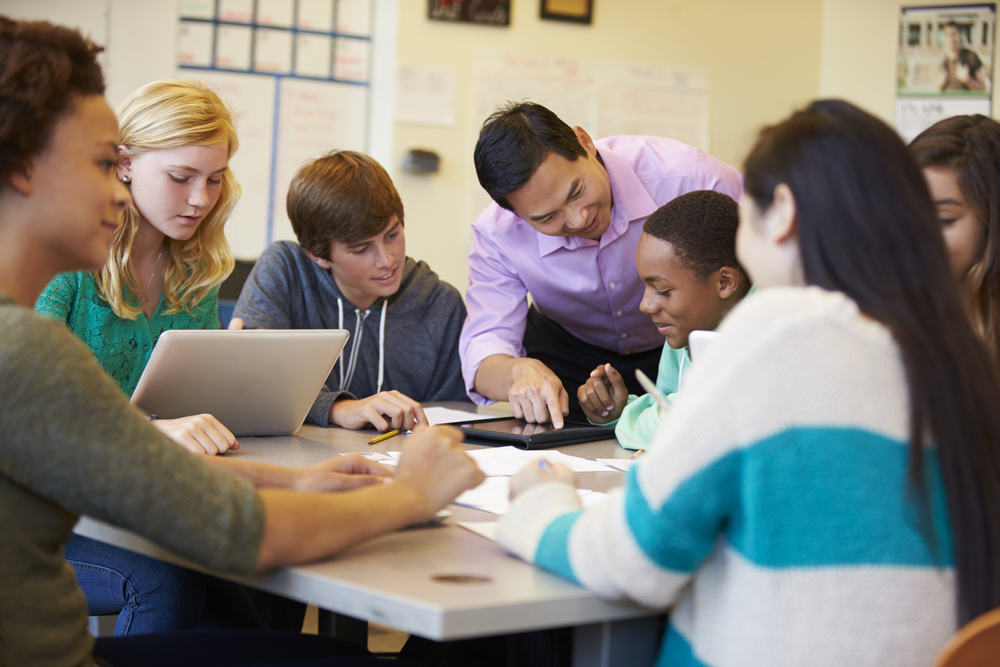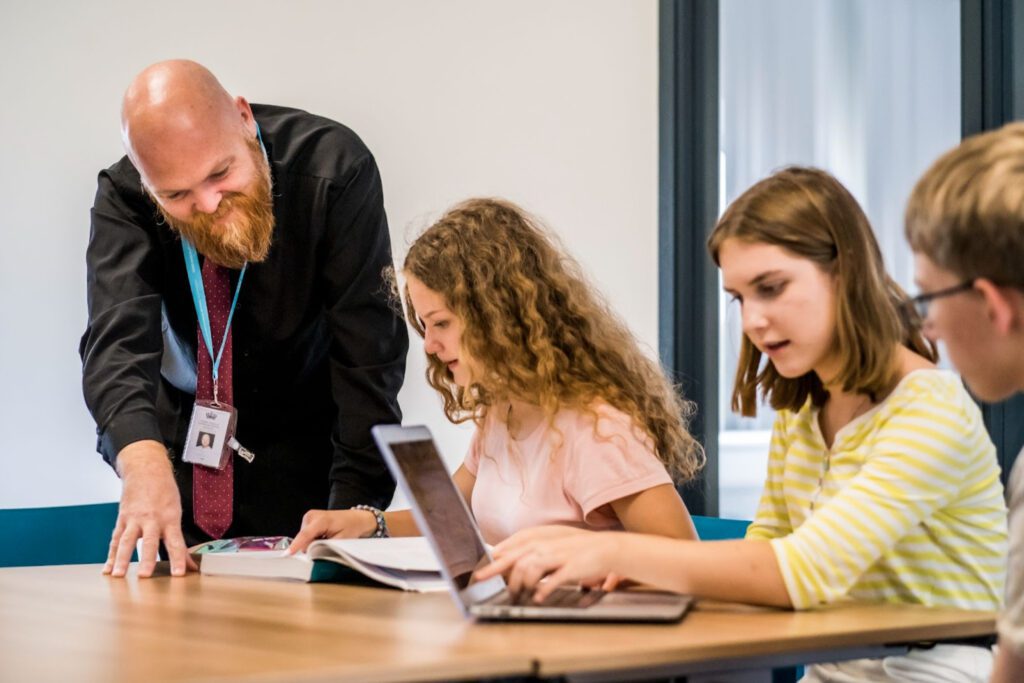Everybody knows, at least since the recent rise of ChatGPT, that artificial intelligence (AI) is not just here to stay, but also seeping into various domains of our lives.
In the blink of an eye, AI-generated writing has now become more sophisticated and life-like. It’s almost, but not quite, like the real thing.
Receive a business e-mail? Chances are it was written using AI. Your beloved Spotify “Daily Mix”? Made by AI. Need help making a meal plan for the week ahead? Just ask AI!
It shouldn’t come as a surprise, then, that slowly but surely, artificial intelligence will begin to play an increasingly important role in your child’s education.
READ MORE | 7 ways an international education gives your children a head start
In fact, one Rotterdam-based international school, Nord Anglia International School Rotterdam (NAISR), is finding itself at the forefront of this educational revolution and is already implementing AI in its classroom in various ways.
“An education revolution”: how AI ensures high-quality education for each child
Before we look into how NAISR uses AI to boost students’ education, let’s discuss the exciting possibilities that this new form of education brings with it.
When thinking about machine learning, many of us view it in a negative light — it’s unknown, hence scary. But in the classroom especially, AI has enormous potential.

How enormous, you ask? Sir Anthony Seldon, a leading contemporary historian and educationalist, has unpacked this in a recent article with Nord Anglia Education.
He believes that in the near future, “with the benefit of AI, every student will receive high quality, personalised teaching, formative assessment and grading.”
In the eyes of the historian, AI will not just make it easier for students to reach their full potential, but it will also have a very positive impact on their mental health. He writes:
“Schools are better at finding out what young people cannot do than what they can. The self-esteem of the already vulnerable takes a huge hit. AI will personalise teaching and tutoring, helping children feel good about their learning, while freeing up time for teachers to spend more time caring for their students.”
So, not only will an education revolution make the learning process more tailored to the individual, but teachers will also greatly benefit from it.
How does NAISR utilise AI to boost its students’ education?
So, how does NAISR apply AI to its teaching? The answer, just like technology, is ever-changing. 😉

Although NAISR is already making big steps in the AI world, the Rotterdam-based international school is continuing to find new ways to integrate the technology into its classrooms.
READ MORE | This international school works with MIT and UNICEF: meet Nord Anglia
They are embracing new technologies by taking each opportunity that presents itself and eagerly waiting to adopt the best practices in education, as led by Nord Anglia Education.
🔧 Using AI as a research and comparative tool, not a quick fix
We know what you’re thinking: “If we let our children use AI in schools, won’t they miss out on valuable life skills?” Well, think of it this way: in our modern age, AI is a valuable life skill.
Knowing how to use AI, debating the ethics of AI, and learning about AI safety will soon be crucial skills for everyday life as well as in the job market.
At NAISR, students learn how to make the most of AI as a research tool in order to make their academic pursuits and goals more easily accessible. At the same time, they are taught about the shortcomings of AI and how they can be accounted for with traditional critical thinking.

“AI, such as ChatGPT, is just an extension of what we already have. There are books, then the internet and now ChatGPT. This is just another step to bring information and data from even further afield together. The main taught element and focus of research has stayed the same throughout; fact check, analyse the different perspectives, draw conclusions, and write them in your own words. This is nothing new.” — Teacher at NAISR
🧠 Preserving the importance of human intelligence
We can’t deny that AI will play a major role in the future, but that doesn’t mean that durable human skills will be any less important. And NAISR knows that.
That’s why the students at the Rotterdam-based school are taught to explore the flaws of AI, stay critical, and embrace the merit of their human intelligence.
In this way, human intelligence and artificial intelligence become complementary.

On top of that, NAISR is focused on teaching its students human skills that can’t simply be replaced by algorithms, such as creativity, teamwork, resilience, and confidence.
It is this unique cocktail of human skills and machine intelligence that can ultimately bring education further.
🏫 Embracing AI, in and outside of the classroom
As Sir Anthony Seldon discusses in his article, AI can be an efficient, time-saving tool in education — especially for teachers who often find themselves bogged down by administrative tasks.
NAISR makes an effort to embrace the time-saving potential of AI, and supports teachers in their professional development by allowing them to learn about AI practices from AI experts.

“AI can be useful for fast planning, creating resources to further lessons in time-efficient ways” — Teacher at NAISR.
When administrative tasks such as planning and creating lessons become streamlined, it allows educators to focus on delivering quality teaching and fostering meaningful connections with their students.
🙋 Individualising support and personalising learning
Last but certainly not least, NAISR makes use of AI-powered platforms to cater to each student’s unique learning style, pace, and ability.
How? By offering learning environments with accessibility features that make education more inclusive.
AI-powered transcription services can benefit students with hearing impairments, while adaptive learning technologies can cater to a diverse range of learning abilities.
By addressing these individual needs, AI helps ensure that education is accessible to all students, irrespective of their background or abilities.
The integration of AI into classrooms marks a significant leap forward in the evolution of education.
By promoting personalised learning, streamlining administrative tasks, fostering collaboration, and providing valuable insights, AI empowers both students and educators.
As we embrace the potential of AI in education, it is essential to strike a balance between technological innovation and the human touch, ensuring that education remains a holistic and enriching experience for all.
And that’s why NAISR is embracing AI in so many innovative ways. 💪
Want to know more about NAISR?
Do you have any questions about Nord Anglia International School Rotterdam, or want to discuss your children’s potential future at the school? No problem! You can easily contact them online or follow their social media.
Do you have any thoughts on the possibilities of AI in the classroom? Share them in the comments!
